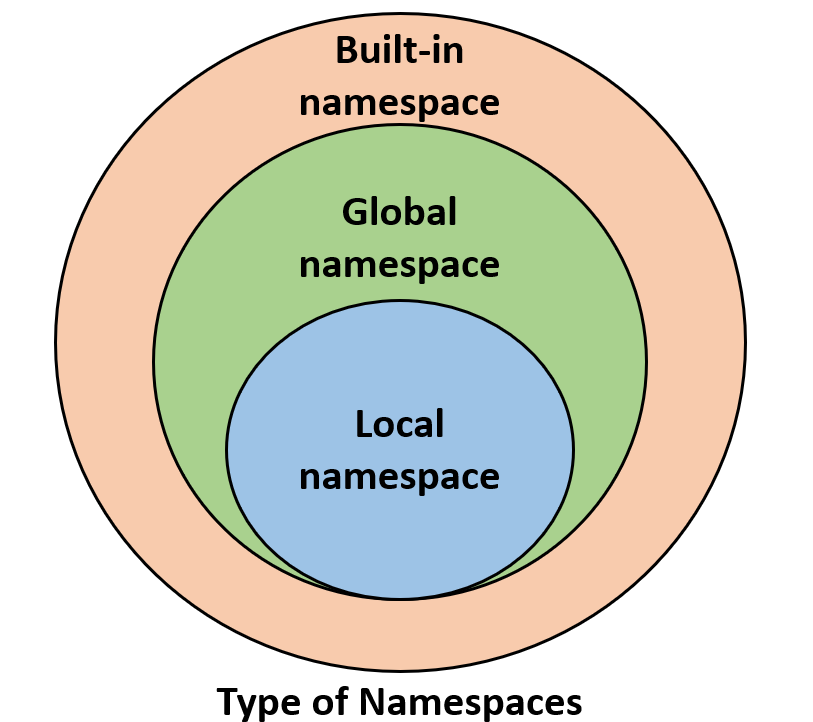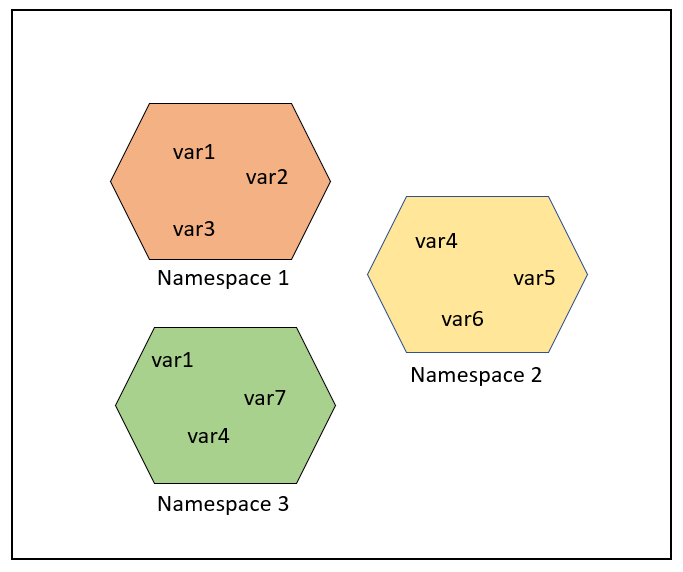What is namespace:
A namespace is a system that has a unique name for each and every object in Python. An object might be a variable or a method. Python itself maintains a namespace in the form of a Python dictionary. Let’s go through an example, a directory-file system structure in computers. Needless to say, that one can have multiple directories having a file with the same name inside every directory. But one can get directed to the file, one wishes, just by specifying the absolute path to the file.
Real-time example, the role of a namespace is like a surname. One might not find a single “Alice” in the class there might be multiple “Alice” but when you particularly ask for “Alice Lee” or “Alice Clark” (with a surname), there will be only one (time being don’t think of both first name and surname are same for multiple students).
On similar lines, the Python interpreter understands what exact method or variable one is trying to point to in the code, depending upon the namespace. So, the division of the word itself gives a little more information. Its Name (which means name, a unique identifier) + Space(which talks something related to scope). Here, a name might be of any Python method or variable and space depends upon the location from where is trying to access a variable or a method.
Types of namespaces :
When Python interpreter runs solely without any user-defined modules, methods, classes, etc. Some functions like print(), id() are always present, these are built-in namespaces. When a user creates a module, a global namespace gets created, later the creation of local functions creates the local namespace. The built-in namespace encompasses the global namespace and the global namespace encompasses the local namespace.

The lifetime of a namespace :
A lifetime of a namespace depends upon the scope of objects, if the scope of an object ends, the lifetime of that namespace comes to an end. Hence, it is not possible to access the inner namespace’s objects from an outer namespace.
Example:
- Python3
# var1 is in the global namespacevar1 = 5def some_func(): # var2 is in the local namespace var2 = 6 def some_inner_func(): # var3 is in the nested local # namespace var3 = 7 |
As shown in the following figure, the same object name can be present in multiple namespaces as isolation between the same name is maintained by their namespace.


